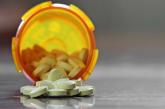Article

Efficacy and safety of high-dose antipsychotic therapy
- Author:
- Brittany Finocchio, PharmD, BCPP
Mr. K, age 21, is admitted to the psychiatry unit with agitation, disorganized behavior, and paranoia. Upon presentation, he has no known medical...
